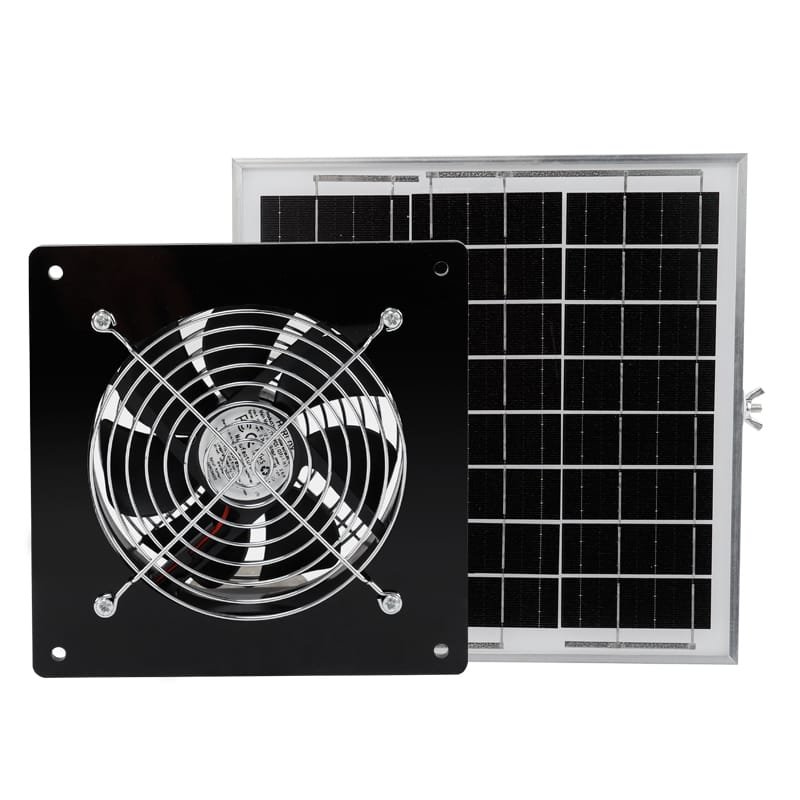How to Read a Fan Performance Curve
Learn the key components and how to interpret a fan performance curve to select the optimal fan for your application.


Exhaust fan and duct fans are two types of ventilation equipment commonly used in industrial settings. While both serve the purpose of air movement and circulation, they have distinct characteristics and applications.
This blog post will explore the key differences between exhaust fans and duct fans, focusing on their functionality, placement, airflow mechanism, noise levels, energy efficiency, and typical applications. By understanding these distinctions, professionals in the machinery industry can make informed decisions when selecting the appropriate fan type for their specific needs.
An exhaust fan is a mechanical ventilation device designed to remove stale, humid, or polluted air from an enclosed space and expel it outdoors. These fans are commonly installed in bathrooms, kitchens, laundry rooms, and other areas prone to excess moisture, odors, or contaminants.
Exhaust fans typically consist of a motor, blades, and a housing unit. The motor powers the blades, which spin to create suction, drawing air from the room and pushing it through the housing unit and out of the building via a duct or vent. The housing unit is mounted on the ceiling or wall and connects to the ductwork leading outside.
The primary function of an exhaust fan is to improve indoor air quality by removing unwanted air pollutants, such as smoke, steam, grease, and odors. By eliminating excess moisture, exhaust fans also help prevent the growth of mold and mildew, which can cause health issues and damage building materials.
A duct fan, also known as an inline fan, is a type of ventilation fan designed to be installed within the ductwork of a ventilation system. Unlike exhaust fans, which are typically mounted on the ceiling or wall, duct fans are positioned along the length of the ductwork, allowing for more flexibility in installation and placement.
Duct fans consist of a cylindrical housing containing a motor and fan blades. The housing is designed to fit seamlessly within the ductwork, with the inlet and outlet ports connecting to the adjacent duct sections. As air flows through the ductwork, the duct fan’s blades spin, propelling the air forward and maintaining proper airflow throughout the ventilation system.
The primary purpose of a duct fan is to boost airflow in long or complex ductwork systems, where the distance or number of bends may reduce the overall air movement. By installing a duct fan, ventilation systems can overcome static pressure losses and maintain optimal airflow, ensuring efficient air circulation and temperature control throughout the building.


Bulk purchases of industrial Exhaust Fan offer significant discounts, ensuring you experience quality without risk.
Exhaust fans are designed to remove stale, humid, or polluted air from a specific room or area, such as a bathroom, kitchen, or workshop. They help maintain indoor air quality and prevent moisture buildup, which can lead to mold growth and other issues.
In contrast, duct fans are used to circulate air through a building’s ductwork system. They are typically part of a larger HVAC system and help distribute conditioned air evenly throughout the space, ensuring consistent temperature and air quality.
Exhaust fans are typically installed in the ceiling or on an exterior wall, depending on the room’s layout and the fan’s purpose. They require a dedicated vent or duct to expel the extracted air outside the building, which may involve cutting through walls or roofs.
Duct fans, on the other hand, are installed within the ductwork system itself. They are positioned at strategic points to help overcome resistance in the ducts and maintain proper airflow. Installing duct fans requires access to the ductwork and may involve modifications to accommodate the fan and its wiring.
Exhaust fans work by creating negative pressure in the room, which draws air out of the space and expels it outside. This process helps remove moisture, odors, and pollutants, replacing the extracted air with fresh air from other parts of the building or outside.
Duct fans, however, work by maintaining the airflow within the ductwork system. They help overcome static pressure and friction losses, ensuring that conditioned air reaches its intended destination effectively. Duct fans can be used for both supply and return air, depending on the system’s design and requirements.
Exhaust fans can produce varying levels of noise, depending on their size, power, and quality. In residential settings, it is important to choose exhaust fans with lower noise levels to minimize disturbance, especially in bedrooms and living areas.
Duct fans, being located within the ductwork, generally produce less noticeable noise. However, if the fan is not sized or installed properly, it can cause vibrations and noise that travel through the ducts and into the living spaces.
Modern exhaust fans are available with energy-efficient motors and features like adjustable speed settings and humidity sensors. These features help optimize the fan’s operation based on the room’s needs, reducing energy consumption and operating costs.
Duct fans also come in energy-efficient models, with electronically commutated motors (ECMs) that offer variable speed control and higher efficiency than traditional PSC motors.
Exhaust fans are commonly used in bathrooms to remove moisture and prevent mold growth, in kitchens to extract cooking odors and smoke, and in workshops or garages to remove fumes and dust particles.
Duct fans are used in a wide range of HVAC applications, including residential, commercial, and industrial settings. They are essential components in systems designed for heating, cooling, ventilation, and air filtration, helping to ensure proper air distribution and maintain indoor air quality.
An exhaust fan primarily removes stale air, moisture, and odors directly from a specific area to the outside. In contrast, a duct fan is designed to move air through duct systems, circulating and exhausting air between indoor and outdoor spaces, often covering a larger area.